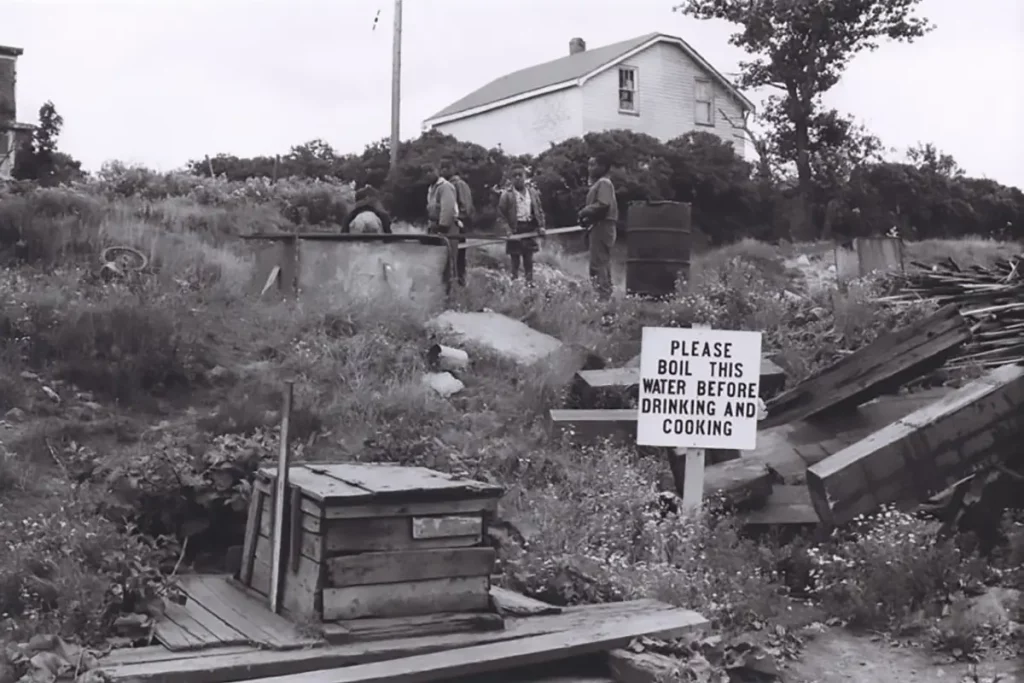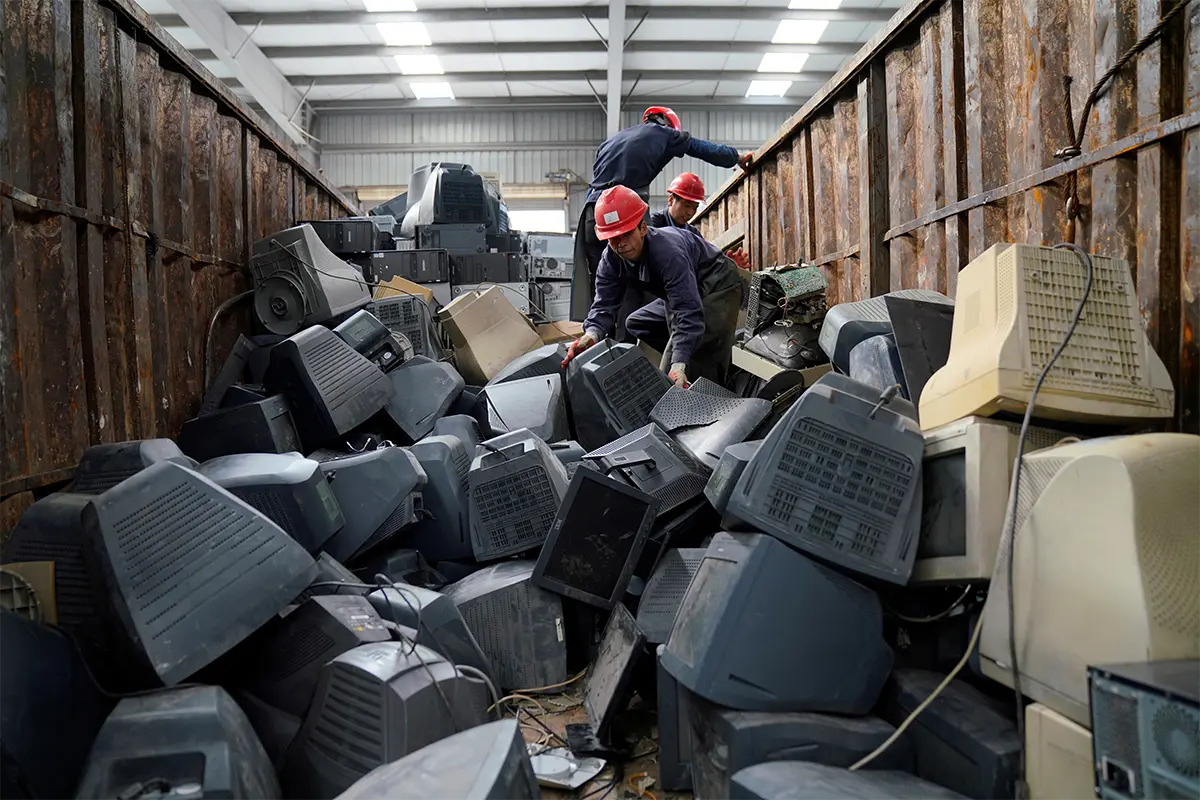The Not In My Backyard approach of developed countries in contrast with the unawareness of marginalized communities: environmental racism, definition and meaning
What is Environmental Racism? Policymakers don’t care when non-white communities live in proximity to pollution. The term coined by African American civil rights leader Benjamin Chavis
The meaning of Environmental Racism. Environmental racism definition means a systematic form of racism in which communities of color bear a disproportionate burden of health risks due to policies and practices that compel them to reside near sources of toxic waste, such as sewage facilities, mines, landfills, power plants, major roads, and airborne particulate emitters. Consequently, they are more likely to experience higher rates of health issues related to hazardous pollutants.
Coined by African American civil rights leader Benjamin Chavis in 1982, the environmental racism definition encompasses racial discrimination in environmental policy-making, enforcement of regulations, deliberate targeting of communities of color for toxic waste facilities, official approval of life-threatening pollutants in these areas, and the historical discrimination of the identity of minorities and further exclusion of these people from leadership in environmental movements.
In practical terms, environmental racism manifests in various ways, from workplaces lacking proper health regulations to the placement of coal-fired power plants near predominantly non-white neighborhoods.
Flint, Michigan, stands out as a glaring example: in 2014, the city switched its water source to the Flint River to cut costs, exposing its majority-black population to dangerous levels of lead and other contaminants due to inadequate treatment. Despite residents’ complaints of water issues and health concerns, city officials dismissed them for eighteen months. The delayed response was later deemed a result of systemic racism by the Michigan Civil Rights Commission.
What is environmental racism? the NIMBY (Not In My Backyard) approach. The birth of the Environmental Justice Movement
This social injustice has its roots in the subordinate conditions in which certain populations live, often lacking the means to understand, confront, and potentially combat the risks they face. In contrast to those who are aware of the dangers of living in certain areas and advocate the NIMBY (‘Not in my backyard’) approach, these communities often remain unaware of these issues, and, not surprisingly, many companies have moved their industries precisely to these areas of the world.
In poorer countries where environmental protection policies are virtually non-existent, and it is therefore easier to pollute without control at the expense of the local population, there is a vulnerability for those seeking to bypass and evade environmental regulations.
This form of social disparity leads a segment of the affluent and aware Western world to exploit and make places on the planet harmful in the name of profit, choosing specific areas based on a racist logic. The historic 1979 case ‘Bean vs. Southwestern Waste’, filed to prevent the construction of a municipal landfill in Houston, Texas. It was revealed that from 1930 to 1978, all five city-owned landfills were located in predominantly Black communities, just like the incinerators and landfills, all situated in neighborhoods inhabited by African American communities. This was a particular case, considering that African Americans represented only 25% of the population, and yet 82% of the waste produced during that period was disposed of in their neighborhoods. This marked the first instance of environmental racism definition, leading to the emergence of the Environmental Justice Movement.

Environmental racism also known as discrimination based on the identity of minorities and where they live: a perpetuator of anti-black racism
Leaders at the annual United Nations meeting dedicated to formulating climate action plans must prioritize directing increased resources to communities facing disproportionate impacts of climate change. Black communities, in particular, bear a disproportionate burden of the consequences of climate injustice.
The impact of environment and climate on black communities in the US soil explained in numbers: over 1 million Black Americans reside within a half-mile of natural gas facilities; more than 6.7 million Black Americans live in 91 US counties with oil refineries; over 1 million Black Americans face a «cancer risk above EPA’s level of concern» due to polluted air; approximately 13.4% of Black American children have asthma, compared to 7.3% of white children.
Indigenous Peoples killed for protecting their lands: the first victims of environmental racism
Indigenous populations are also victims of environmental racism. Native American communities continue to endure substantial amounts of nuclear and hazardous waste due to corporations exploiting weaker land laws, particularly in the US. The Dakota Access Pipeline protests in 2016-17 highlighted the clash between tribes and policy power, revealing the threat posed to the Standing Rock Indian Reservation’s water supply and culturally valuable sites.
A notable instance is the Kichwa community of Sarayaku in the Ecuadorian Amazon. In 2012, the Inter-American Court of Human Rights condemned Ecuador for selling indigenous lands to a well-known Argentine oil & gas company. This not only jeopardized biodiversity and the local economy but also infringed upon the cultural and religious rights of the Sarayaku population. Unfortunately, such cases are not isolated, and indigenous communities are consistently affected.
Studies indicate that indigenous communities are disproportionately impacted by the consequences of climate change. In 2020 alone, 331 indigenous leaders were killed for opposing environmental devastation and pollution. Despite constituting only 5% of the global population, indigenous populations safeguard 80% of the Earth’s biodiversity through their knowledge and spiritual connection to nature and their lands.
What happened during COP28? Not enough has been said or done about Indigenous communities affected by environmental racism
On December 5th 2023, COP28 focused on indigenous populations worldwide, with great participation in side events, negotiations, and the visitor-friendly Ex Expo space. Various associations attended as formal observers during the negotiation meetings. Some of the ongoing issues include: insufficient financial support, since the committed funds to the Loss and Damage Fund are meaningless compared to the climate disaster costs faced by indigenous peoples globally; intersectionality of gender perspective, since despite discussions in the gender and climate change area, indigenous women and women of local communities are not adequately addressed in the Lima Work Program on Gender and the Gender Action Plan; and the lack of constraints for big corporations, since the moratorium proposal has fallen, there are no clear constraints for big corporations regarding the prior implementation of safeguarding, governance, and complaint mechanisms, necessary for protecting human rights and preventing harm to indigenous populations in carbon market projects.
The only positive development is the mention of indigenous populations and the acknowledgment of their knowledge in the latest draft on Global Stocktake. This specifically relates to effective consultation and engagement for a just transition.
Despite these considerations, it appears that in COP28, the identity of minorities and the areas where these communities live, have been somewhat marginalized in the debate.
Environmental racism extended globally with the rise of globalization: world leaders celebration with the COP28 agreement to transition away from fossil fuels
Environmental racism extended globally with the rise of globalization, leading to the dumping of pollutants and e-waste in the global south where safety laws and environmental practices are less stringent. However, the fear remains that as environmental laws tighten in developed countries, dumping activities may shift towards the global south.
While global leaders commemorated the COP28 accord aiming to shift away from fossil fuels, Indigenous communities, frontline organizations, and climate justice advocates expressed dissatisfaction with the agreement, labeling it as unjust, inequitable, and merely a continuation of established practices. Despite the vocal support from many developed nations for phasing out coal, oil, and gas, their commitments often came with conditions such as unabated, and some limited their pledges to only coal, as exemplified by the United States.
On the contrary, numerous developing countries, while aspiring to limit the rise in global temperatures to 1.5°C (2.7°F) above pre-industrial levels, consistently stressed the necessity for any departure from fossil fuels to be ‘fair, funded, and fast’, with wealthier nations responsible for a share of pollution leading the transition. In the end, countries possessing substantial reserves of oil and gas emerged as the apparent beneficiaries of the agreement.
First world countries need to acknowledge the historical responsibility, which gained prosperity through fossil fuel consumption, and bear the primary responsibility for climate breakdown
The absence of differentiated responsibility and means of implementation, obligations for developed nations to assist developing countries in tackling and adapting to the climate crisis, leaves the final deal lacking equity and respect for the identity of minorities, according to advocates for climate justice.
Wanun Permpibul of Climate Watch Thailand: «This COP is yet another disgrace where affluent polluters arrogantly evade their responsibility, forsaking any semblance of fairness or justice. They present themselves as climate champions, while our communities in the global south suffer the consequences of a crisis they did not create».
Bareesh Chowdhury from the Bangladesh Environmental Lawyers’ Association and Friends of the Earth Bangladesh: «Without adequate funds and means of implementation, areas most affected by climate change are left with empty promises and empty pockets. We need billions of dollars, but we’ve been given peanuts, and even more debt». Bangladesh, highly vulnerable to extreme weather and slow-onset impacts like sea level rise, stands among the nations most affected.
Meena Raman, a climate policy expert with Third World Network in Malaysia: «Developed countries essentially obtained everything they wanted without major concessions. There is a notable absence of equity here.
The GST – which evaluates progress against the three long-term goals of the Paris Agreement – also opens the door for costly, specialized, and often ineffective abatement technologies like carbon capture and storage, blue hydrogen, carbon markets, and geoengineering, with minimal safeguards. This is likely to result in additional land seizures, water scarcity, and severe pollution, particularly impacting Indigenous and other marginalized communities».
Hindou Ibrahim, a delegate from Chad: «They did not heed the voices of the people. The GST grants clear permission to companies to develop infrastructure and extract minerals for the just transition. Who will benefit from this? We cannot grant companies permission without including language to safeguard and respect the land and its inhabitants».
Normally, COP agreements are reached through consensus, requiring every nation’s agreement before finalization. Why did African nations, small island states, and other dissatisfied countries concede to the final outcome? It is challenging for poor developing countries to push back and hold their ground when developed countries refuse to yield and threaten to withdraw, and in the end, the consensus is dictated by the most powerful.
Environmental Racism
Ecological racism, or ecological apartheid, is the disproportionate placement of landfills, incinerators, and hazardous waste disposal facilities nearby non-white communities.



















